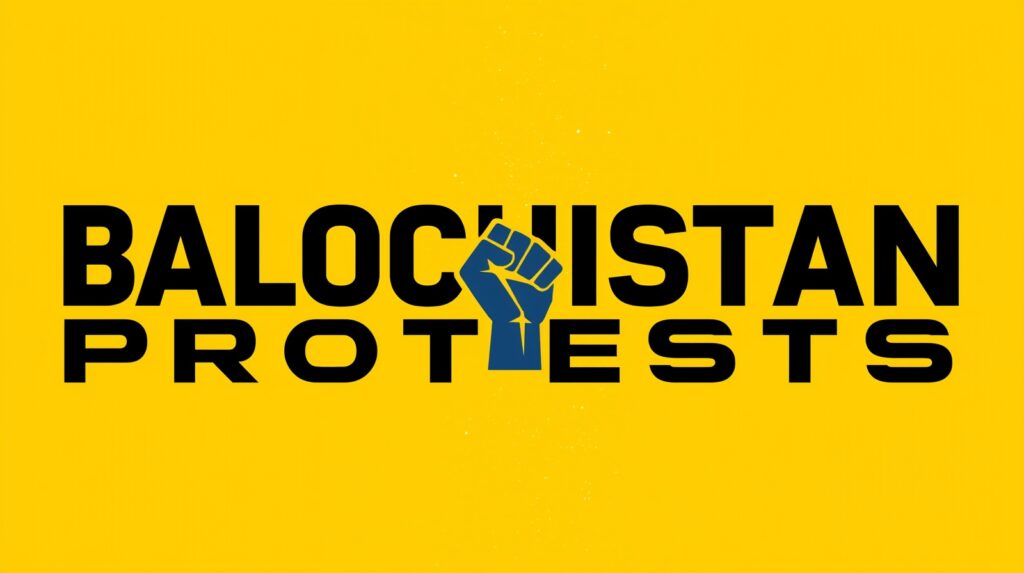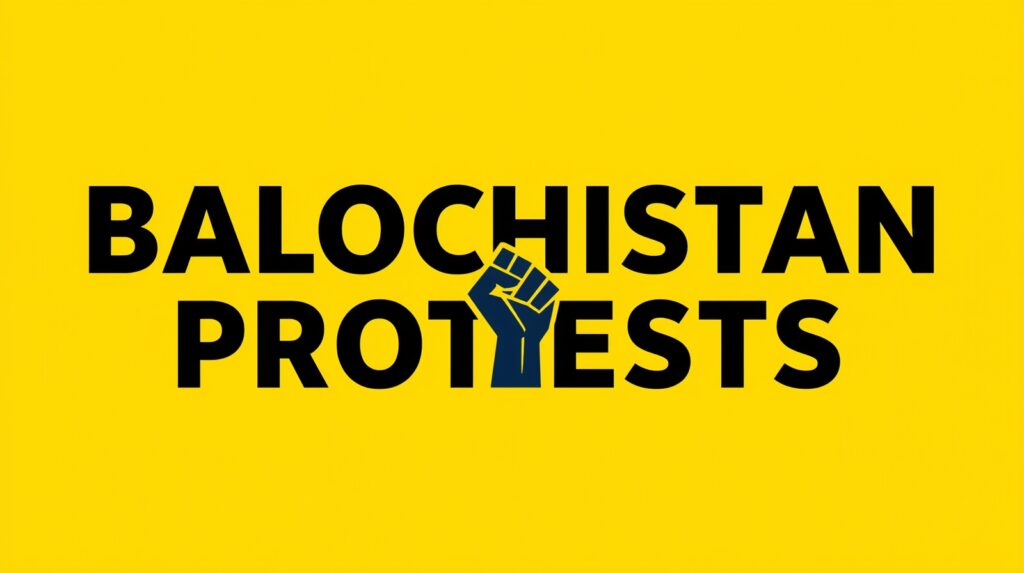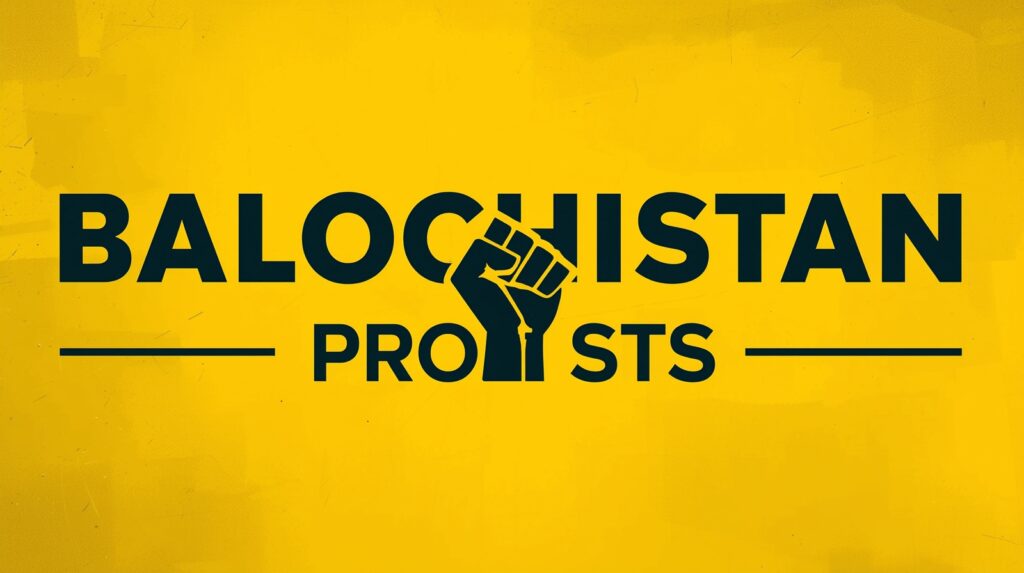Balochistan, Pakistan’s largest yet least populated province, has long been a region of contrasts — rich in natural resources but poor in social and economic development. In 2025, the region once again came under the spotlight as huge protests erupted across major cities and towns. These Balochistan protests have gained national and international attention, revealing deep-rooted problems linked to missing persons, human rights violations, and unfair resource distribution.

Background: The Spark Behind the 2025 Protests
The new wave of unrest began following the Jaffar Express hijacking incident in March 2025. The train was captured by armed terrorists, reportedly belonging to the Baloch Liberation Army (BLA). Several passengers and security officers were slain or abducted, provoking a security response.
In response, families of missing persons, political groups, and civil rights organizations came to the streets, demanding justice and accountability. For many Baloch civilians, the tragedy became a symbol of the long-standing cycle of violence, forced disappearances, and state indifference.
Core Causes of the Protests
Enforced Disappearances and Human Rights Violations
One of the key catalysts of the protests has been the problem of enforced disappearances. For decades, families in Balochistan have accused security agents of abducting activists, students, and political workers without due process. Many of these individuals remain untraceable, while their families continue to hold peaceful marches requesting their safe return.
Human rights organizations like Amnesty International and Human Rights Watch have consistently called on Pakistan to address these charges, but progress remains slow
Despite its massive deposits of gas, coal, and minerals — including the vital port city of Gwadar — Balochistan is Pakistan’s poorest province. Locals often complain they receive little benefit from the province’s riches. Infrastructure, education, and healthcare remain underdeveloped, and unemployment rates are high.
Economic Marginalization and Resource Inequality
This sense of economic exclusion fuels anger among the youth, who feel that their land enriches others while they live in deprivation.
Political Alienation and Lack of Representation
Many Baloch people believe that they are politically sidelined. Although there are Baloch nationalist groups, like as BNP-Mengal, local voices sometimes feel drowned out in national politics. Federal decision-making on provincial resources, security, and economic initiatives is regarded as centralized, leaving little possibility for local engagement.
The protests consequently symbolize not simply economic complaints but also a desire for political recognition and respect.
Protest Movements and Key Players
The Role of the Baloch Yakjehti Committee (BYC)
The Baloch Yakjehti Committee (BYC) has emerged as a key force in the latest protests. It has organized demonstrations around Quetta, Turbat, and Gwadar, seeking the retrieval of missing persons and accountability for extrajudicial actions.
BYC’s rallies have drawn big audiences, including women and children holding photos of missing loved ones. Their peaceful protests have become emblems of civil resistance and perseverance.

Shutter-Down Strikes and Public Mobilization
Political groups like BNP-Mengal have also called for wheel-jam and shutter-down strikes across the province. These strikes have crippled industry and transportation in crucial districts, showing the growing discontent of the public.
Cities like Quetta, Khuzdar, and Gwadar witnessed large road blockades and rallies demanding justice, equality, and an end to governmental repression.
State Response and Crackdowns
The government’s response to the protests has been uneven. While officials acknowledge citizens’ worries, security personnel have cracked down on some demonstrations, citing dangers of militancy and lawlessness.
Reports of internet shutdowns, mass arrests, and police clashes with demonstrators have generated major worries among human rights groups. The Balochistan administration justifies these steps as vital for keeping stability, but others contend that such tactics deepen mistrust and isolation.
Consequences of the Protests
1. Social Impact
The protests have intensified the sense of alienation among Baloch inhabitants. Families of missing persons, especially women-led groups, have emerged as important voices for justice. However, the constant confrontation between protesters and security personnel risks deepening the trust gap between the state and the people.
2. Economic Disruption
Frequent strikes, road blockades, and curfews have badly impacted local trade and transportation. Small enterprises, store owners, and daily wage earners have been struck hard, aggravating the economic situation in the already poor province
3. Political and International Pressure
The protests have drawn international attention. Global media outlets and rights groups have urged Pakistan to ensure accountability and transparency. Domestically, opposition parties have seized the crisis to attack the federal government’s management of Balochistan, further raising political tension.
Government’s Stance and Challenges
Security Concerns
The Pakistani government and security agencies say that armed insurgent groups in Balochistan pose a severe threat to national security. They say that certain protests are infiltrated by separatist elements that exploit civilian issues to pursue militant agendas.
While this fear has some merit, disproportionate security operations sometimes blur the boundary between militants and civilians, leading to human rights violations and discontent.
Administrative and Legal Limitations
Weak governance frameworks and delayed court processes prevent efficient resolution of grievances. Families of missing persons sometimes confront bureaucratic difficulties while seeking justice, and transparency in investigations remains restricted.
The Way Forward: Dialogue, Justice, and Development
To restore peace and trust, Pakistan needs a comprehensive and compassionate approach toward Balochistan.
1. Open Dialogue
The government must engage in direct dialogue with protest leaders, including the BYC and BNP-Mengal. Honest discussions about complaints, accountability, and autonomy can open the way for reconciliation.
2. Protect Human Rights
A transparent system to investigate enforced disappearances is important. Independent judicial inquiries should be formed, and victims’ families must be involved in the process. Justice should be apparent, fair, and timely.
3. Fair Resource Distribution
Development projects, especially those related to CPEC (China-Pakistan Economic Corridor), should incorporate local employment targets, community development plans, and transparent income sharing. Economic empowerment can diminish animosity and create trust.
4. Infrastructure and Connectivity
Investment in roads, hospitals, schools, and internet infrastructure is vital. When individuals are connected – both physically and digitally — they feel seen, heard, and respected.
5. International Oversight and Civil Society Involvement
The involvement of civil society organizations and independent media can ensure transparency and avoid abuses. International monitoring can assist Pakistan keep its human rights commitments while boosting its worldwide image.

Conclusion: A Call for Unity and Justice
The Balochistan protests of 2025 reflect decades of frustration and neglect. Behind every phrase and banner lies a family’s tale of grief, hope, and survival. The people of Balochistan are not seeking conflict; they are seeking justice, dignity, and equality.
For Pakistan to move forward as a unified nation, it must listen to these voices – not stifle them. True peace will come not from force, but from fairness, empathy, and inclusiveness.
If addressed sincerely, today’s protests might create the foundation of tomorrow’s unity – a future where every Baloch person feels proud, protected, and part of Pakistan’s progress


